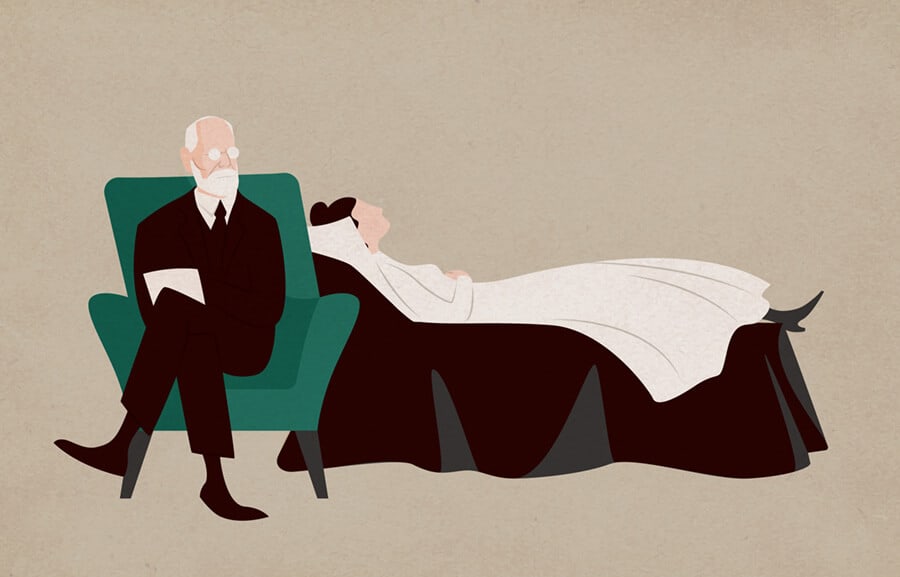Dream interpretation and psychoanalysis date back to the ancient times, yet the modern understanding of these methods is quite different. How to use dream analysis and the psychoanalytic process to identify your deepest traumas, fears, and desires to explore your mind and thrive in life?
Getting to know yourself will help you set adequate goals for your future and overcome trauma or other innermost hindrances.
Psychoanalysis and dream interpretation have a long history and though the opinions on them in modern psychology are still quite divided, you can use some of the techniques developed by the eminent psychoanalysts of the 20th Century to find out who you are.
The Origins of Dream Interpretation and Psychoanalysis

In ancient Babylon, Greece, and Egypt, the powerful rulers of those states had their own dream interpreters. It was believed that, through dreams, one can connect to the supernatural.
Modern psychoanalysis and dream interpretation theories have drifted away from the esoteric meanings of the psyche and dreams, yet one could confidently say that these techniques still aim to find out more about the unknown regions of the human self.
Despite there being no real evidence that they help in therapy, both Carl Jung and Sigmund Freud based their revolutionary careers on the exploration of the unconscious – the part of the psyche we have no access to.
About your lucid dreams discover more here.
Yet, even if you are not in need of mental therapy, psychoanalysis and dream interpretation can help you get to know your inner desires and explore your own mind.
In the ancient times, dreams were believed to predict the future. pharaohs and kings had their private interpreters who were supposed to predict war, natural calamities, or other menaces.
According to Freud’s theory on dream analysis, dreams – in a certain way – do predict the future: through wish fulfilment, our dreams show us the future that we would like to happen, not necessarily the one that will happen.
The therapeutic technique of dream interpretation can tell us about our inner wishes, desires, or conflicts in the psyche. The goal of discussing the dream content with a psychoanalyst is to find out about the repressed and concealed parts of our mind.
Look Into Yourself
Hidden fears and desires in the unconscious mind are the concepts we are unaware of consciously. Wish fulfilment dreams often show us the crudest of desires, things we may even not confess to consciously, frequently connected to the basic physiological needs.
They’re devoid of any social implications, which is why we might find them embarrassing or despicable.
By using dream interpretation and psychoanalysis, tapping into the unconscious, we can successfully locate and address child experiences that can turn into a neurotic condition or trauma. Such memories we cannot possibly recall, yet they may influence our psyche today.

According to Sigmund Freud’s Dream Psychology, dreams sometimes reflect our feelings and thoughts from the day previous to the dream. When it comes to wish fulfilment, you might have noticed it yourself that, when going to sleep on an empty stomach, you dreamed of a feast or food in general.
Dreams aren’t straightforward and the way they epitomise our deepest desires isn’t plain. For example, a dream fulfilling the craving for attention can use specific persons which are unrelated to the wish itself.
The ‘dream work’ uses a variety of thought transformations, like condensation and displacement, which create a warped image of our desires.
Dream thoughts present themselves in complex digressions and associations, with layered backgrounds and foregrounds.
Exploring the unconscious, it’s natural to awe at the complexity of the human mind. In Dream Psychology, for instance, Freud elaborated on fear and disgust: how some of them are taught by our parents via the notions of society, while others are natural and evolution-triggered. Of course, these comprehensive theories haven’t been taken for granted by everyone.
Criticisms and Subjectivity
A psychoanalyst needs to cross-examine their patient thoroughly, and methods such as dream interpretation require full confidence in the scholar. In order to make an educated examination, psychoanalysts have to know about every little detail and association of the patient, even the embarrassing ones, which requires plenty of trust in the psychoanalytic process.
As we said, there is no hard data backing the Freudian dream analysis and related methods. Partly, it’s because there’s still so much we don’t know about the brain and a lot of these techniques are based on assumptions. Freud’s counter-argument was that we trust physicists about their new findings even if you don’t know an iota about physics, so why oughtn’t we to trust psychoanalysts?
Furthermore, in this kind of therapy it’s hardly possible to omit subjectivity or imposing certain conclusions on patients. Psychoanalysts are humans too without a doubt, and they are influenced by their opinions and experiences as well.

Dream interpretation and psychoanalysis have evolved rapidly, and Freud’s reliability was often put in question based on how often he would change his mind. He, however, stated that he is reliable not despite, but because he changes it.
Such a therapy entails enormous amounts of time and effort, which is yet another drawback. Some say it may be emotional and anxiety-provoking and may lead to re-traumatisation. Moreover, it’s very unlikely to be successful with patients who are delusional, paranoid, schizophrenic, or narcissistic.
Now that you know what psychoanalysis is and have a clear view of its possible merits and disadvantages, let’s move on to how you can benefit from getting to know your unconscious mind better.
How to Use Psychoanalysis and Dream Interpretation

In A General Introduction to Psychoanalysis, the father of the therapeutic method – Sigmund Freud – outlines the psychoanalytic process. First comes identifying the suppression (a trauma, the core of the problem), then finding the resistance that maintains the suppression (what stops it from being identified by consciousness), and confronting the patient with the resistance.
If you have found yourself full of resentment, negativity, or other mental problems recently, trying to dig into the root of the issue and acknowledging it will help you to thrive.
Similarly, the Internal Family Systems Model (IFS) developed by Richard C. Schwartz in the 1980s sees the mind as interacting sub-personalities, all with positive intentions to protect the self from trauma. Schwartz distinguished Exiles, Managers, and Firefighters, so sub-personalities that interact with each other in varied relations.
Be it through the convoluted process of dream interpretation, digging into the unconscious with psychoanalysis, or breaking down the self with IFS, the goal of all these therapies is the same – to rid you of the core problem stopping you from progressing in your life.
Though your dreams won’t tell you the future, as the ancient peoples believed, they may tell you a lot about your personality and who you are. Once you’re in possession of this knowledge, you’ll find it easier to set yourself goals for the future and take control of your life.
Despite the fact that these therapeutic methods aren’t perfect, they’re just some of the ways to explore the immeasurable corridors of the human mind. The more you learn about it, the more you can use this knowledge to help yourself and others to move forward in life.
Photos: Shutterstock
Enjoy psychology? How about this then?
Support us!
All your donations will be used to pay the magazine’s journalists and to support the ongoing costs of maintaining the site.
Share this post
Interested in co-operating with us?
We are open to co-operation from writers and businesses alike. You can reach us on our email at [email protected]/[email protected] and we will get back to you as quick as we can.









